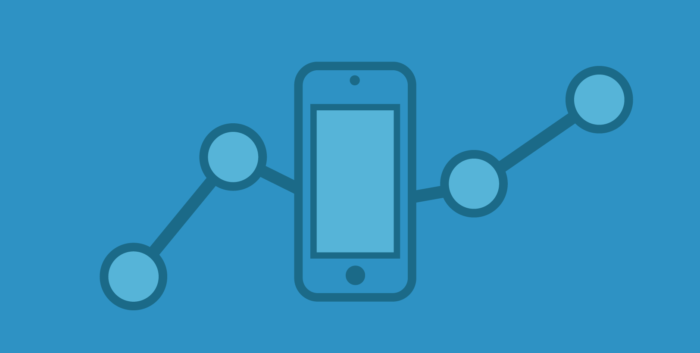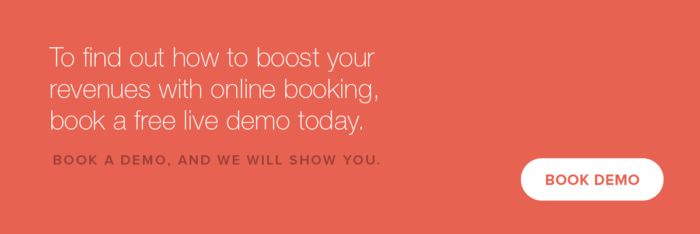3 Ways Home Services Companies Can Survive an Economic Downturn
- June 29, 2022
- By: Vonigo
Market downturns and recessions can be scary for home services companies. When sales volume lags and revenues contract, it can be all-too-easy to go from profits to losses.
The simplest and most obvious solution is to reduce operating expenses. Lay off staff, sell equipment, stop offering lower-margin work, reduce working hours, etc. This article is not about that — instead, we want to take a look at some indicators of business health that home services company operators can monitor that may help them weather a market downturn.
When monitoring the financial performance of your business, it helps to have some key performance indicators (KPIs). The indicators tell you, at a glance, how your business is performing. To help survive market fluctuations, here are some KPIs to keep an eye on.

1. Focus on Monthly Recurring Revenue (MRR)
Understanding MRR is quite simple. If a customer books a one-time job, that’s just revenue. If they subscribe to a monthly service (like lawncare, cleaning, or some other kind of ongoing service), that’s recurring revenue.
The reason MRR is desirable is because it helps to flatten out your cashflow. If your business can count on a certain amount of guaranteed earnings each month, it is better equipped to survive when sales are down.
Ideally, a home service business can cover most or all of their ongoing operating expenses with MRR, leaving the one-off jobs for profit and growth. Simple stated, the closer to 100% of your monthly operating expenses that you can get, the more stable your financial position. To boost MRR, offer annual packages with monthly payments. For example, a landscaping or cleaning company can offer ongoing service with regular appointment times. They can even offer bonuses in order to get a sale — for example, a free gutter cleaning or spring yard cleanup as an incentive to sign up.

2. Upsell, Cross-sell and Resell to Boost Customer Lifetime Value (LTV)
Here’s the hard truth: If you don’t have a strategy in place to earn more revenue from your existing customers, you’re leaving loads of money on the table. When a customer books a service, looks for ways to earn more revenue from each sale, both now and in the future.
Think about customers not in terms of the amount of their most recent purchase, but with the total revenue you can earn from them over a lifetime. The easiest way to boost customer LTV is to sell them a recurring package (see above). Some other ways are upselling other services or equipment they need. Your customer bought a window washing package? Tell them about the bundle you offer that includes gutters as well.
This strategy is made MUCH easier when you keep accurate customer records using a customer relationship management (CRM) tool. Knowing your customer’s sales history helps you to upsell and boost LTV. For example, a customer who ordered a pressure washing service in the spring might wish to have the same service the following year. Or a customer who purchased junk removal service for a garage to prepare for a move might require more help when moving day finally arrives.
Bonus tip: Maintain an email list of customers and prospects who have agreed to receive promotions by mail. Need a quick injection of cash? Run a promo in your newsletter for a service that could lead to MRR and a healthy LTV.
3. Carefully Monitor Your Customer Acquisition Cost (CAC)
When sales are down, you have to do something to pick them back up. In a downturn, in can be tempting to put a stop to marketing or advertising campaigns, in favor of saving the expense.
Rather than stopping these initiatives, a slow market might be a good time to ramp them up — that is, if you can still “buy” customers at a profit. Understanding your CAC is simple: take your advertising and/or marketing expenses (split these up by campaign for even more clarity) and divide by the number of customers you were able to acquire for that channel. For example, let’s say a $2000/mo Facebook Ads campaign yields 25 customers. In this case, “acquiring” each customer cost an average of $80.
Naturally, you have to be sure that your average sale comes in at well above $80 for this campaign to be profitable. But here’s the thing — you don’t have to make all of that $80 back on the first sale. For example, let’s say some of those customers sign up for an annual service in which they pay $30/month. And they remain as a customer for an average of two years. That customer has a LTV of $720 — meaning they were a bargain to “purchase” at $80. Getting a handle on these figures will give you the confidence to go out and acquire more profitable customers.

Bonus Tip: Reduce CAC with Online Booking
Booking customers by phone is costly work. It can take a lot of time and requires the help of a trained professional. While it’s always nice to have sales experts in-house to answer customer inquiries, running all your sales through the phone can get costly.
Offering online booking will have two major upsides for a home services business. First, it reduces the cost of customer acquisition, as they “help themselves” to make the booking. Secondly, the convenience of booking online can help you access a new kind of customer — one that is motivated by convenience, and less so by getting the lowest possible price.
Over time, aiming to increase the percentage of sales you make via online booking versus on the phone will gradually improve your margins (and profits).
CRM, Online Booking and More for Home Services Companies
The Vonigo platform offers multi-location home services companies the tools they need to maintain great customer relationships. Vonigo’s dashboard, mobile app and online booking engine handle booking, scheduling, customer communications, invoicing, payments, and most of all, the ability to track all of your key business metrics.
In fact, Vonigo’s dashboard offers the ability for franchisors or individual location owners to monitor up to 75 different metrics. All you have to do is decide which you want to monitor closely as your KPIs to indicate the overall health of your business.
Want to see how Vonigo can help you better manage your customers and grow your business, even in a down market? Book a free, private demo and we will show you what’s possible.




